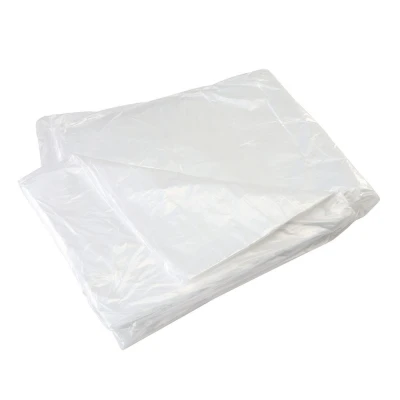to select
to navigate
esc to close
Go Back
Custom Packaging
Bags & Liners
Tubing & Film
Packaging Supplies
Shop by Application

Hi there,
how can we help you today?
Shipping options will change based on location.
Current ZIP Code:
Update zip code
Use my current location
Order before 4pm EST for same-day shipping on in-stock items!
Lowest Price Guarantee
30-Day Returns & Exchanges
100% Satisfaction Guarantee
Polyethylene Poly Sheeting is a general-purpose poly film with a range of standard to heavy-duty thicknesses for use in construction projects, paint protection, agriculture applications, and equipment. Plastic Construction Film & Agriculture Film Also known as Visqueen Film.


Polyethylene Poly Sheeting is a general-purpose poly film with a range of standard to heavy-duty thicknesses for use in construction projects, paint protection, agriculture applications, and equipment. Plastic Construction Film & Agriculture Film Also known as Visqueen Film.
What is poly sheeting?
Poly sheeting is a plastic sheeting made primarily from polyethylene. It is a versatile, flexible, and durable material often used for covering or protecting surfaces and creating barriers.
What are the common uses of poly sheeting?
Poly sheeting is widely used in construction as a vapor or moisture barrier, in agriculture as a greenhouse film or a ground cover, in painting or remodeling as a drop cloth, and as a protective cover for equipment, vehicles, and materials.
How is poly sheeting sold?
Poly sheeting is usually sold in rolls and is available in various thicknesses, measured in mils, and widths. It can be clear or black, and it can be ordered in custom sizes and colors for specific applications.
What does the term "mil" refer to?
The term "mil" in relation to poly sheeting refers to the thickness of the sheeting. One mil is equivalent to 0.001 inches or 25.4 micrometers. The higher the mil, the thicker and stronger the sheeting.
Is poly sheeting recyclable?
Yes, poly sheeting is recyclable. It is generally categorized as a plastic #4 (LDPE – Low-Density Polyethylene) and can be recycled where facilities exist. However, sheeting with additives or coatings may not be recyclable, and local recycling programs should be checked.
Can poly sheeting be used as a vapor barrier?
Yes, poly sheeting is often used as a vapor barrier in construction to prevent the passage of moisture through walls, ceilings, and floors. It is essential to use sheeting of an appropriate thickness and to install it correctly to ensure effectiveness.
How do I determine the right thickness of poly sheeting for my project?
The right thickness depends on the specific needs of your project. Thinner sheeting (1-2 mils) might be suitable for light-duty applications like covering furniture during painting. Medium thickness (4-6 mils) is suitable for more robust applications like vapor barriers. Heavier-duty sheeting (10 mils and above) can be used for industrial applications where high puncture and tear resistance are needed.
How durable is poly sheeting to weather conditions?
Poly sheeting is durable and can withstand various weather conditions. It is often used outdoors to protect equipment, as a covering for greenhouses, and as a vapor barrier in construction. UV-resistant poly sheeting is available for applications with prolonged exposure to sunlight, which can prolong the life of the sheeting.
Can poly sheeting be used for greenhouse applications?
Absolutely. Poly sheeting is widely used in agriculture to construct greenhouses. UV-resistant and clear poly sheeting is typically used to allow sunlight to pass through while protecting plants from the elements.
Is it safe to use poly sheeting as a food cover?
Poly sheeting intended for food contact should be specified as food-grade, meaning it meets FDA requirements for safety. Non-food-grade poly sheeting should not be used as a food cover as it may not be safe for food contact.
How do I calculate the weight of a poly sheeting roll?
Formula:
W" x L' x Gauge(mil) / 2500
Example 20' x 100' 4 mil film / Sheeting:
240" x 100’ x 4 / 2500 = 38.4 lbs / roll




